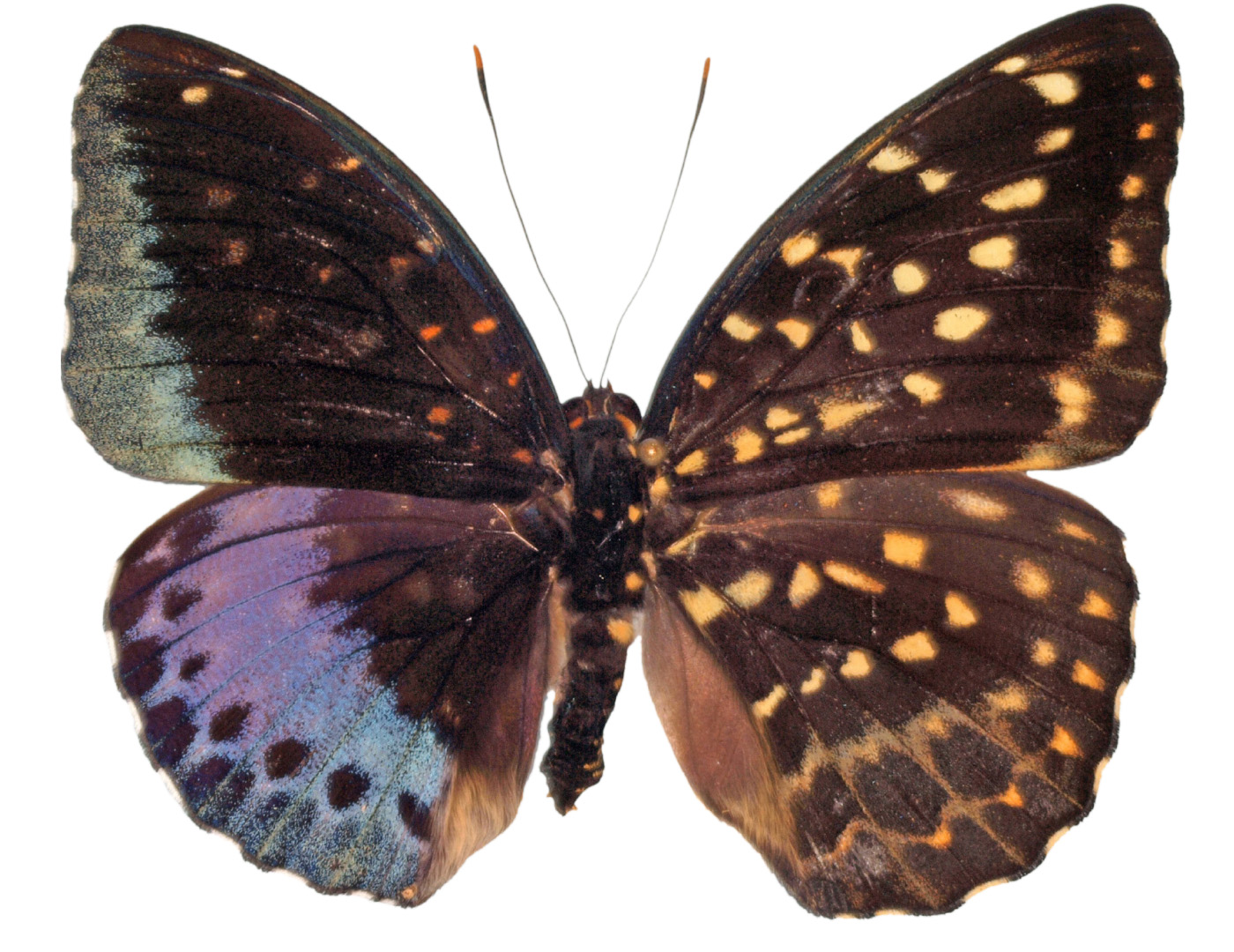
Middlesex
This butterfly emerged with features of both sexes. It has the coloration and slightly smaller shape of a male on its left half and the drabber characteristics of a female on its right half.
This Lexias Pardalis butterfly emerged from its chrysalis in the Academy’s Butterflies! exhibit and spread its wings to reveal a genetic abnormality known as gynandromorphy.
Its two right wings — brown with yellow and white spots — were characteristic of a female of the species, and its two left wings — darker with green, blue and purple coloring — were typical of a male. The right wings were shaped differently than the left, and the body’s coloration was split lengthwise down the middle as half male and half female.
How does it happen? Gynandromorphism, says Entomology Collection Manager Jason Weintraub, “is most frequently noticed in bird and butterfly species where the two sexes have very different coloration. It can result from non-disjunction of sex chromosomes, an error that sometimes occurs during the division of chromosomes at a very early stage of development.”
The butterfly was discovered by chance and was exhibited for a curious public before becoming a permanent part of the Academy’s Entomology Collection of more than 3.5 million specimens.